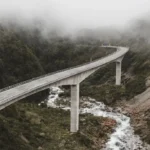What is Soil Moisture?
Soil moisture is a fundamental indicator reflecting the amount of water present in the soil, playing a crucial role in the health and development of terrestrial ecosystems. This measure not only influences water availability for plants but also affects soil quality and various biogeochemical processes.
Its importance lies in its direct impact on plant life. Plants rely on an adequate water supply for vital processes such as photosynthesis and nutrient absorption. It also influences root access to water, directly affecting the growth, development, and productivity of crops.
Furthermore, soil moisture has implications for soil health itself. Balanced water content contributes to soil structure, promoting aggregate formation and improving porosity. These features are essential for enabling air flow, water infiltration, and nutrient exchange, thus contributing to soil fertility.
Variability in soil moisture also influences broader hydrological processes, such as aquifer recharge, surface runoff, and evaporation. These factors, in turn, affect water availability for surface and groundwater sources, as well as for human and agricultural use.

Proper monitoring and management of soil moisture are crucial for optimizing water use efficiency, preventing desertification, and mitigating the impacts of extreme weather events such as droughts and floods.
With the help of modern technologies such as sensors and measurement systems, scientists and farmers can obtain precise information on soil moisture, enabling more informed and sustainable decision-making in water resource management.
Importance in Engineering
Soil moisture is a vital parameter in the field of civil and geotechnical engineering, significantly influencing the design, construction, and stability of various infrastructures. This aspect pertains to the amount of water present in the soil and its distribution, playing a key role in decision-making during engineering projects.
In geotechnical engineering, precise knowledge of soil moisture is essential for assessing the bearing capacity of the terrain. Soil resistance to structural loads is directly related to its water content, as the presence of water can affect its physical and mechanical properties.
Neglecting this factor can result in unstable foundations and, ultimately, the failure of structures.
In the design of roads, bridges, and buildings, variability in soil moisture can also influence ground expansion and contraction. Soils with high plasticity, such as expansive clays, may experience significant volumetric changes based on their water content, directly affecting the structural integrity of infrastructures.
Moreover, soil moisture is a crucial factor in the planning and management of construction projects. Slope stability, soil compaction during construction, and the prevention of erosion problems depend directly on understanding and controlling soil moisture.

Hydrogeological engineering also benefits from monitoring soil moisture when assessing the interaction between groundwater and structures built on the surface. Proper management of soil moisture is essential to prevent issues such as differential settlements, leaks, and damage to infrastructure.
Soil moisture is a critical component in engineering, as its proper understanding and management are fundamental to ensuring the safety, stability, and durability of structures and infrastructures built on the Earth’s surface.
Continuous monitoring of soil moisture through modern geotechnical technologies is essential to optimize the performance and longevity of constructions in various environments and climatic conditions.
How Can Soil Moisture Be Measured?
In engineering, soil moisture measurement is a critical aspect, especially in construction, geotechnics, and infrastructure projects. Here are some common techniques used to measure soil moisture in the context of engineering:
Capacitance Sensors: These sensors consist of electrodes buried in the soil that measure the soil’s capacitance between them. Capacitance changes with the amount of water present, as water is an electrical conductor.
These sensors provide quick and real-time measurements of soil moisture. Some modern systems allow the installation of multiple sensors at different depths to obtain a complete profile of soil moisture.
Time Domain Reflectometry (TDR): TDR uses probes buried in the soil that emit pulses of electromagnetic waves. The speed of propagation of these waves is directly related to soil moisture.
Data obtained through TDR are accurate and allow the assessment of moisture profiles based on depth. This method is particularly valuable in projects where a detailed understanding of soil moisture variability in different layers is required.
Tensiometers: These instruments measure water tension in the soil, indicating how much suction is required to extract water from the soil. They are valuable in geotechnics to assess the soil’s water retention capacity and water pressure in saturated soils. Tensiometer data is especially useful in the design of foundations and structures influenced by soil moisture variability.
Neutron Hygrometers: These instruments emit neutrons into the soil and measure the amount of absorbed neutrons, which is related to soil moisture. Neutron hygrometers are effective for obtaining measurements at significant depths and are commonly used in advanced geotechnical studies, such as in dam engineering projects.
Electrical Resistance Sensors: These sensors measure the soil’s electrical resistance, which varies with moisture. Although simple and economical, their application may be limited by the variability of the soil’s electrical properties. They are commonly used in geotechnical projects to obtain quick and economical indications of soil moisture.
What Factors Can Affect Soil Moisture?
Soil moisture can be affected by a variety of factors, which may vary depending on climate conditions, topography, vegetation, and human activities. Here are some of the most significant factors that can influence soil moisture:
Climate: Climate conditions, such as precipitation, temperature, and relative humidity, are key factors affecting soil moisture. The amount and frequency of rainfall, as well as evaporation caused by high temperatures and low relative humidity, directly impact water availability in the soil.
Topography: The terrain’s topography can influence the distribution of soil moisture. Areas with steep slopes may experience higher water runoff, affecting soil moisture retention. Additionally, low-lying areas may accumulate water, impacting soil saturation.
Soil Type: Soil composition, including texture, structure, and water retention capacity, significantly impacts soil moisture. Sandy soils tend to drain faster and retain less water, while clayey soils retain more water but may have drainage issues.
Vegetation: The presence and type of vegetation can affect soil moisture. Plants absorb water through their roots, reducing soil moisture. However, vegetation cover can also provide shade and reduce evaporation, helping maintain soil moisture.
Land Use and Human Activities: Human activities such as agriculture, urbanization, and deforestation can have a significant impact on soil moisture. Vegetation removal, soil compaction due to construction, and disruption of natural runoff and drainage patterns can affect the soil’s water retention capacity.
Irrigation Systems: In agricultural and gardening environments, the application of artificial irrigation systems can have a significant impact on soil moisture. Inadequate or excessive irrigation can negatively affect soil health and water availability for plants.
Snow Cover: In regions with seasons, snow accumulation and melting can also affect soil moisture. Melting snow can provide an additional water source for the soil.
These factors interact in complex ways and can vary depending on the geographical location and local conditions. Understanding these elements is essential for properly managing soil moisture in different contexts, whether for agricultural, geotechnical, or environmental conservation purposes.







Related
Importance of Slope Stability in Engineering
What is Geodynamics? – the study of Earth’s changes
Tectonic Faults in Colombia and Their Impact on Civil Engineering